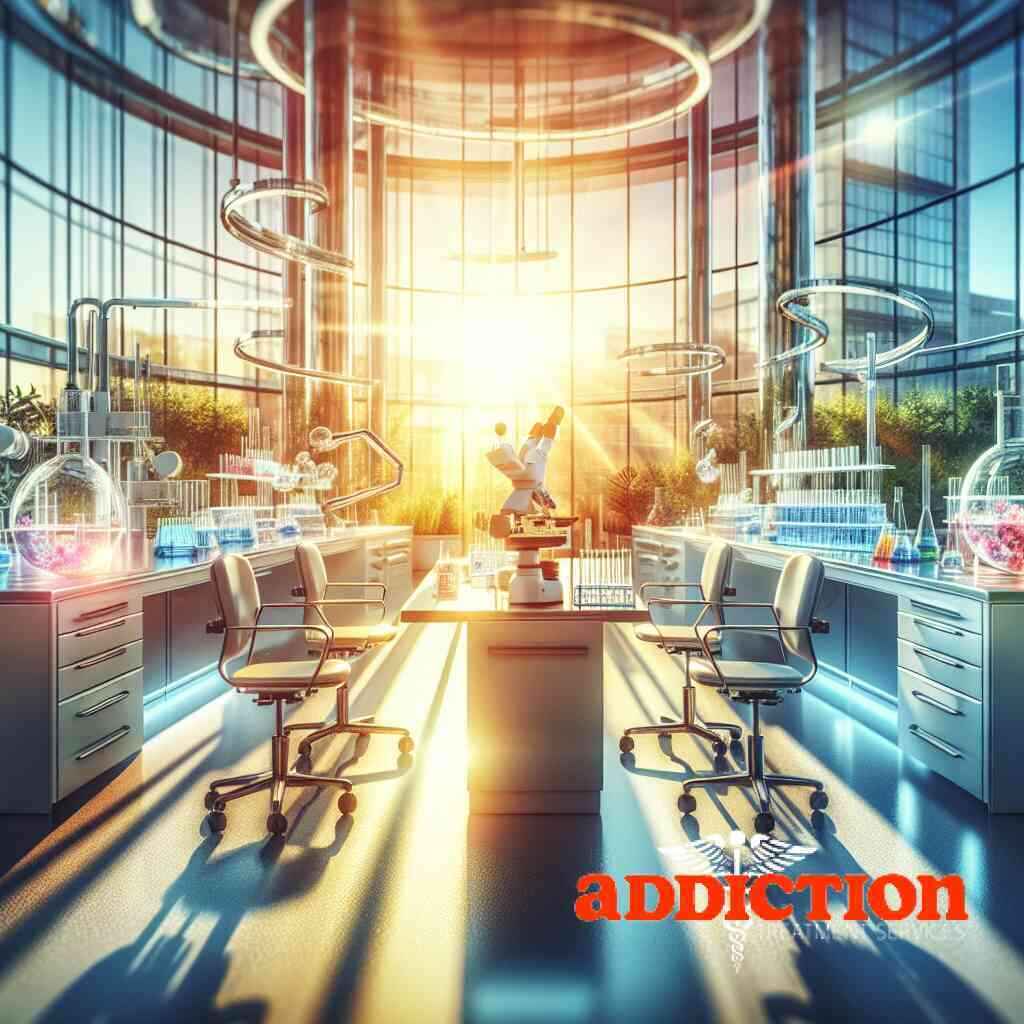 Posted On: 10/11/2024
Posted On: 10/11/2024Unveiling the 10-Panel Drug Test
Introduction to Drug Screening Methodologies
Drug screening methodologies have evolved in both complexity and precision, becoming critical tools in addiction treatment services. These methods play a crucial role in identifying substance use disorders and enabling effective treatment programs. A variety of techniques exist, from urinalysis to hair follicle analysis, each offering unique advantages and limitations in substance detection. The sophistication of modern drug testing methods ensures accurate detection of illicit substances, aiding in the maintenance of a drug-free workplace and society. By understanding drug testing methods, individuals and organizations can better navigate the intricacies of substance screening.
History and Evolution of Multi-Panel Testing
The history of multi-panel testing is marked by continuous advancements aimed at improving drug screening accuracy and reliability. Initially, single-panel tests focused on detecting specific substances, which presented numerous limitations for comprehensive drug tests. As the demand for more thorough screening grew, multi-panel tests emerged, capable of detecting multiple substances simultaneously. A comprehensive drug test overview emphasizes the significance of these innovations in clinical settings. Enhanced by technological developments, multi-panel tests now offer faster and more accurate results, proving indispensable in addiction recovery services and workplace drug testing.
Why the 10-Panel Drug Test Stands Out
The ten-panel drug test distinguishes itself by providing a broad spectrum of substance detection, crucial for effective substance abuse detection in communities. Unlike simpler tests, it covers a wider range of substances, including common illicit drugs and prescription medication misuse. This makes the ten panels an invaluable tool for those seeking comprehensive substance use monitoring. In contemporary addiction treatment centers, its role extends beyond mere detection; it guides tailored intervention strategies. The test’s precision in detecting and differentiating between various drug metabolites showcases why it remains a preferred choice among treatment facilities and employers. Employing sensitive and specific drug screening methods ensures trusted results that empower informed decisions in addiction recovery efforts.
Decoding the 10 Panel: Breaking Down the Components
Understanding Each Substance Tested
The 10 panel drug test is designed to detect ten different substances, offering a comprehensive view of an individual’s substance use. These tests typically include screening for marijuana, cocaine, opiates, amphetamines, and benzodiazepines, among others. Each drug has specific metabolites that the test targets, ensuring precise detection. For instance, cocaine cessation involves checking for the metabolite benzoylecgonine, while opiate detection focuses on morphine or codeine. The 10 panel stands as a gold standard in identifying common illicit substance tests that are critical in both clinical settings and workplace screenings.
The Science Behind Substance Detection
Substance detection in a 10 panel test revolves around the chemical interactions between drug metabolites and the test reagents. Using immunoassay screening, the tests identify antibodies produced in response to drug metabolites present in the urine sample. This reaction gives a preliminary indication of substance presence, which is later confirmed by gas chromatography-mass spectrometry (GC-MS) for accuracy. The sensitivity of immunoassays allows the detection of substances even at low concentrations. This method reflects the swift technological strides in modern approaches to clinical toxicology that enhance the reliability and trustworthiness of drug screening.
Integrating Specificity and Sensitivity in Drug Testing
A successful drug testing program integrates both specificity and sensitivity to minimize false positives and negatives. Specificity refers to the test’s ability to correctly identify those without the drug, while sensitivity determines those with drug presence. Balancing these factors is crucial for accurate test results, especially given the complexities of human metabolism and the potential for cross-reactivity. Laboratories continually refine their protocols and testing methods to improve both aspects, ensuring that results are both reliable and actionable. The pursuit of excellence in testing underscores the challenges of accurate substance detection and their resolution in the everyday application of drug tests.
Navigating Drug Test Results: From Collection to Interpretation
Urinalysis and the Pathway to Accurate Results
Urinalysis is a cornerstone in drug testing, providing critical insights into recent substance use. This method, known for its non-invasive collection and ease of administration, is often preferred in both workplace and clinical settings. Urine samples undergo a multi-step analysis beginning with immunoassay screening to detect the presence or absence of drug metabolites. If a positive result is suggested, confirmatory tests like gas chromatography-mass spectrometry (GC-MS) are employed to ensure accuracy. These steps are essential, reinforcing the importance of validating preliminary findings. The methodical pathway from sample collection to result analysis fortifies its role as a reliable indicator of substance use, supporting drug-free initiatives.
The Role of Clinical Toxicology in Drug Abuse Detection
Clinical toxicology plays a vital role in understanding and detecting drug abuse, offering profound insights into substance interactions within the body. This field specializes in the assessment of toxic substances, including drugs, and their potential harm to human health. Through toxicological evaluations, experts determine the presence and concentration of drugs, providing a basis for accurate detection of illicit substances. These evaluations are crucial not only for diagnosing substance use disorders but also for aiding rehabilitation through clinical methods. Clinical toxicologists collaborate with healthcare providers to integrate toxicology results into treatment strategies, ensuring informed decision-making and effective patient care.
Interpreting Drug Test Results: What Do They Really Mean?
Interpreting drug test results requires a comprehensive understanding of pharmacology, toxicology, and timing of drug exposure. Results indicate whether a substance is present above a certain threshold, but understanding their implications involves more than a simple positive or negative outcome. Factors such as the individual’s metabolism, frequency of use, and the specificities of the drug in question influence results. Professionals strive to interpret drug test results accurately, taking into account potential cross-reactivity and external influences that might affect outcomes. Clear communication of test implications is essential in addiction recovery services, helping to guide treatment strategies and ensuring compliance and progress within recovery programs.
Applications of the 10 Panel Test in the Real-World
Workplace Drug Testing: Ensuring a Drug-Free Environment
Workplace drug testing is an essential practice for maintaining productivity and safety. The ten panel drug test offers a comprehensive approach to detect a wide range of substances, helping employers maintain a safe working environment. By using these tests, companies demonstrate their commitment to the importance of workplace substance screening, ensuring that employees fulfill their duties without the impairment caused by drug use. Legal obligations and industry standards often necessitate such testing, reinforcing its role in safeguarding employees and clients alike. Through systematic testing, organizations can minimize risks associated with drug use, protecting their reputation and financial performance.
The Role of Drug Testing in Addiction Recovery Services
In addiction recovery services, drug testing acts as both a diagnostic tool and a motivational aid. By incorporating the 10 panel drug test, treatment centers can monitor substance use, helping tailor personalized recovery plans for individuals. This regular monitoring through drug testing offers a concrete method to track progress, fostering accountability among those in recovery. Treatment centers utilize results to support continuous dialogue between healthcare providers and clients, addressing relapses promptly. Drug testing in these settings also encourages transparency, building trust between caregivers and clients, thereby enhancing the effectiveness of treatment programs.
Legal and Clinical Uses of Comprehensive Drug Testing
The legal and clinical sectors leverage comprehensive drug testing for various critical functions. Legally, 10 panel drug tests inform decisions in cases involving custody, probation, and employment disputes. These tests ensure objective evidence regarding an individual’s substance use, influencing court rulings and legal actions. Clinically, such tests contribute to clinical toxicology in drug tests, assisting in the assessment and diagnosis of substance use disorders. Healthcare professionals rely on test results to develop effective treatment strategies, adapt intervention methods, and optimize patient outcomes. This dual utility underscores the test’s importance in both legal obligations and comprehensive healthcare delivery, reinforcing its integral role in modern society.
Challenges and Controversies in 10 Panel Drug Testing
Navigating Drug Test Limitations and False Positives
Navigating the limitations of drug testing entails understanding the intricacies of false positives and negatives in result interpretation. False positives occur when the test inaccurately identifies a drug presence, potentially due to cross-reactivity with other substances. This can seriously impact individuals, leading to wrongful accusations and consequences, especially in sensitive environments like workplaces. Drug test limitations are further exacerbated by variations in individual metabolism and the timing of substance consumption. Addiction treatment centers must implement thorough confirmatory tests to mitigate these issues, ensuring that results are reliable. By doing so, they maintain the integrity of comprehensive drug testing protocols and enhance the effectiveness of drug-free initiatives.
Controversies Surrounding Illicit Substance Testing
The discussion around illicit substance testing is fraught with controversies in substance abuse detection. Critics argue that the societal focus on detecting illicit drugs, such as marijuana and cocaine, often overlooks the prevalent misuse of prescription medications. Additionally, there is ongoing debate about the legal and ethical implications of mandatory drug screenings in various sectors, including employment and law enforcement. These issues spotlight the challenges of balancing individual rights with societal safety, raising questions about the proportionality and fairness of drug testing practices. Addressing these controversies requires a nuanced approach that respects personal privacy while safeguarding public health, calling for continuous dialogue and policy refinement in drug testing methodologies.
Balancing Privacy Concerns with Public Safety in Drug Screening
Balancing privacy concerns with public safety is a critical challenge in the application of drug screening, particularly in workplace settings. On the one hand, organizations have a vested interest in ensuring a substance-free workplace that promotes safety and productivity. On the other hand, employees have valid concerns about privacy invasion and the potential misuse of their personal information. Navigating this dichotomy involves implementing clear, transparent policies that outline the purposes and procedures of drug testing. Employers must ensure that drug screening is conducted ethically, respecting legal standards and individual rights. The development of secure data handling practices is also essential to protect sensitive information, fostering trust and cooperation between employers and employees. Through these efforts, organizations can uphold public safety without compromising personal privacy.
The Future of Drug Testing: Emerging Trends and Innovations
Advancements in Drug Screening Technologies
The landscape of drug testing is rapidly evolving, driven by continuous advancements in screening technologies. These innovations aim to enhance the accuracy and efficiency of drug detection, offering solutions that are both comprehensive and user-friendly. One notable advancement is the development of portable testing devices, which allow for on-the-spot analysis of samples, significantly reducing turnaround times. The integration of digital tools in drug testing methodologies has further streamlined processes, enabling real-time data collection and analysis. These technological strides reflect the ongoing drug test innovations and trends, underscoring the industry’s commitment to precision and reliability in substance detection.
Expanding the Horizon: Beyond Urinalysis
While urinalysis remains a widely used method for detecting drug use, advancements in the field have paved the way for exploring alternative testing approaches. Techniques such as oral fluid and hair follicle analysis offer distinct advantages, including extended detection windows and the ability to identify recent substance intake without the need for invasive procedures. These methods exemplify the shift towards more holistic screening processes, accommodating a broader spectrum of detection scenarios. By diversifying testing methods, the industry addresses the limitations of traditional techniques, expanding the horizon for drug testing innovations. This evolution is crucial to meeting the complex needs of modern substance abuse detection, encouraging the adaptation of versatile and accurate testing solutions.
Enhancing Accuracy: Novel Approaches in Drug Detection
The quest for accuracy in drug detection has led to the exploration of novel methodologies designed to minimize errors and enhance reliability. Innovations such as tandem mass spectrometry have set new standards for sensitivity and specificity, allowing for the detection of minute quantities of drug metabolites. Additionally, the application of machine learning algorithms in data analysis has begun to revolutionize the process, offering predictive insights that enhance the interpretation of test results. These approaches represent the cutting edge in current approaches to substance detection, fostering an environment where accuracy and precision are prioritized. As these technologies continue to develop, they promise to redefine drug testing paradigms, setting the stage for more informed and effective substance use management.
Conclusion: The Integral Role of 10 Panel Drug Testing
Reflecting on the Impacts of Drug Testing on Society
Drug testing, particularly through the use of 10-panel tests, has profound implications for society. These tests not only help identify individuals struggling with substance use disorders but also play a part in ensuring safer environments both at work and within communities. By detecting drug use early, these tests prompt timely interventions crucial for recovery and rehabilitation. Despite challenges such as privacy concerns, the benefits of widespread drug testing include reduced substance abuse and its associated societal consequences. This proactive approach enhances public health initiatives and supports a decrease in drug-related incidents and accidents, reflecting its pivotal role in contemporary society.
Setting the Path for Responsible Drug Use Monitoring
The 10 panel drug test is vital in setting a responsible framework for monitoring drug use. This process involves balancing the need for accurate detection with respect for individual privacy. By focusing on sensitive and specific drug screening methods, organizations can accurately identify drug use while minimizing false positives. These tests support organizations and treatment facilities in maintaining clear policies and procedures that are fair and transparent, fostering an environment of trust. By setting stringent standards in drug testing, stakeholders can ensure accountability while protecting individual rights, thereby promoting a responsible and ethical approach to drug use monitoring.
Encouraging Informed Decisions in Substance Use Management
Informed decision-making is a cornerstone of effective substance use management. The detailed insights provided by ten panel drug tests empower individuals and organizations to make educated choices about treatment and intervention. For instance, healthcare providers rely on comprehensive results to formulate effective addiction treatment plans, ensuring they cater to the individual’s specific needs. Likewise, employers utilize these results to make informed decisions about workplace safety and health. By embracing the data derived from these tests, society can approach drug use challenges with informed, compassionate strategies that facilitate recovery and support pathways for sustainable, healthy lifestyles. For those seeking assistance with substance use disorders, engaging with resources like addiction treatment services can be transformative, offering guidance and support throughout the recovery journey. By integrating testing insights, these services link individuals to targeted support mechanisms, underscoring the vital role of informed decisions in managing substance use.
Frequently Asked Questions
Question: What substances are commonly detected in a 10 panel drug test by Addiction Treatment Services?
Answer: A 10 panel drug test typically screens for ten substances to offer a comprehensive overview of drug use. These usually include marijuana, cocaine, opiates, amphetamines, and benzodiazepines, among others. Each substance is detected through specific metabolites present in the urine, ensuring precise and accurate results. This wide detection spectrum makes it an invaluable resource for substance detection in workplace drug testing and clinical toxicology settings.
Question: How do Addiction Treatment Services ensure accuracy and reliability in their ten-panel drug test results?
Answer: Addiction Treatment Services prioritizes accuracy by integrating advanced drug testing methods, including immunoassay screening followed by confirmatory testing such as gas chromatography-mass spectrometry. This dual approach minimizes false positives and negatives, enhancing the sensitivity and specificity of drug detection. By employing state-of-the-art laboratory drug testing protocols, we ensure that our results are both reliable and actionable, essential for informed decisions in addiction recovery services and workplace safety initiatives.
Question: Can you explain the role of a 10-panel drug test in addiction recovery services, as highlighted in the blog post ‘What Is A 10-Panel Drug Test?’
Answer: A 10 panel drug test plays a crucial role in addiction recovery services by acting as both a diagnostic tool and a motivational aid. Regular testing helps treatment centers track substance use and tailor personalized recovery plans. This fosters accountability and supports continuous dialogue between healthcare providers and clients. By providing concrete evidence of progress, drug tests enhance transparency and build trust, ultimately improving the effectiveness of treatment programs. As outlined in the blog post, Addiction Treatment Services integrates comprehensive drug tests to ensure optimized care in addiction recovery.
Question: Why is urinalysis considered an essential method in 10 panel drug testing by Addiction Treatment Services?
Answer: Urinalysis is essential in 10 panel drug testing because it offers non-invasive sample collection and provides quick, accurate insights into recent substance use. At Addiction Treatment Services, urinalysis begins with immunoassay screenings for immediate detection, followed by confirmatory tests if initial results are positive. This process ensures precision in substance detection, supporting drug-free workplace initiatives and effective addiction treatment strategies by identifying substance use promptly and accurately.
Question: What advancements in drug screening technologies do Addiction Treatment Services incorporate to enhance the accuracy of their ten panel drug test?
Answer: Addiction Treatment Services incorporates several advancements in drug screening technologies to enhance test accuracy. Notably, we utilize portable testing devices for on-the-spot analysis, significantly reducing result turnaround times. Additionally, the use of advanced methodologies such as tandem mass spectrometry and machine learning algorithms allows for highly sensitive and specific drug detection. These innovations align with our commitment to precision and reliability in substance detection, ensuring that both individuals and organizations receive trustworthy results essential for addiction treatment and workplace safety.




